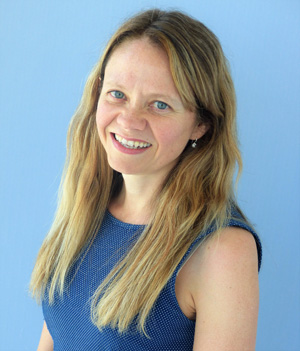
Professor Kylie Ball
Alfred Deakin Professor
NHMRC Principal Research Fellow
Head of Early- and Mid-Career Research Development, Institute for Physical Activity & Nutrition Research, Deakin University Melbourne
@KylieBall3
Happy Academic blog
When I was in high school, I had no idea my current career existed. I was a categorical nerd and studied so hard I was on track to get the kinds of marks required for entry into a degree in medicine or law or the like. So when an admired teacher told me I should apply to study medicine, and that to not do so would be ‘a waste’, I duly submitted my application.
Thankfully I had enough nous shortly afterwards to realise that in fact I wasn’t that interested in medicine, and I changed my preferences to psychology. I’m glad I did, as I learned a valuable lesson that a far greater ‘waste’ would have been to follow a path that someone else, no matter how well-meaning, thought I should pursue, rather than the path that inspired me.
I was interested in people, and wanted a career where I was helping people, but I was less interested in their physical workings and more interested in how they thought and why they behaved certain ways. So psychology it was. I set out imagining a future as a clinical psychologist, working with people experiencing trauma, or stressful events, or psychological conditions.
Not many students love doing university assignments, but I did (see earlier, re: nerd). I loved being challenged with a new question or problem, setting out to investigate it, collating and interpreting evidence and writing it up in a persuasive way. When I discovered that some people spend much of their lives doing this—i.e. research—I was hooked. Rather than continue on a clinical pathway I thought I’d first ‘just try’ applying for a PhD, so I could spend a bit longer indulging in research. Twenty years later I remain a full-time researcher, having enjoyed indulging so much that I never did turn back to that clinical path.
What I have retained though is a passion for helping people, and this has led me to shape my career in a way that I can also indulge that passion. It’s not in the fashion I once imagined but rather focuses on drawing on my research experience to help colleagues at early and middle stages of their own research careers. In my 20 years of full-time research in obesity prevention and public health, I have had so many opportunities—multiple research fellowships and the academic freedom that comes with those, inspirational colleagues, and international travel among them. But above all I have had wonderful mentors, and as a direct result have become the person I am today. I feel a moral imperative to pay this forward and use my experiences to benefit others. And I saw lots of others in my field who were struggling and facing many challenges as they set out on their own research careers.
So I sought opportunities in my current research role, which I still loved, to do so. I advocated to include capacity building and mentorship as key components of my institute’s mission. I volunteered to oversee early- and mid-career research development in my institute. And I started the Happy Academic blog to try to spread the mentorship as broadly as I could, knowing many EMCRs around the country and the world do not receive much by way of career support. The feedback has been wonderful, and the satisfaction that comes from knowing my support is helping in some way is immense.
Some key lessons from all this:
For someone who was once not even aware of such a role, I feel immensely fortunate to have a career combining these passions for research and helping others.
[Ed. If you know a senior researcher who is giving back to the EMCR community, please get in touch!]
© 2025 Australian Academy of Science